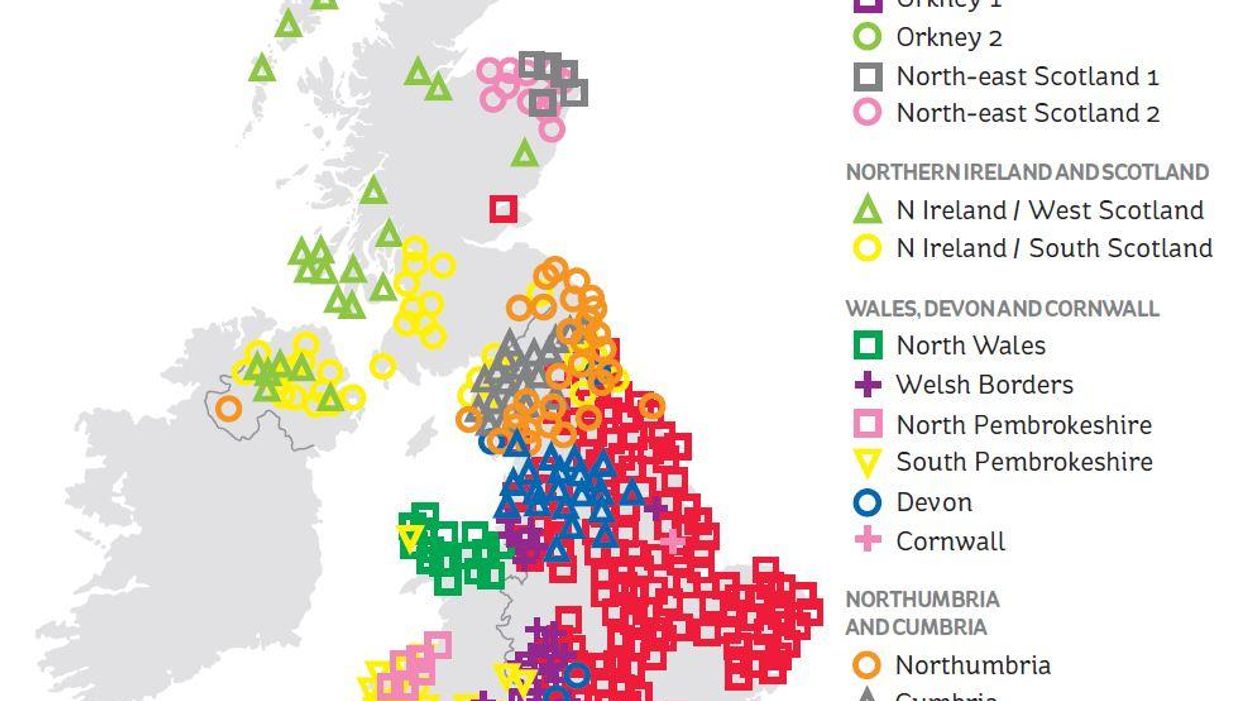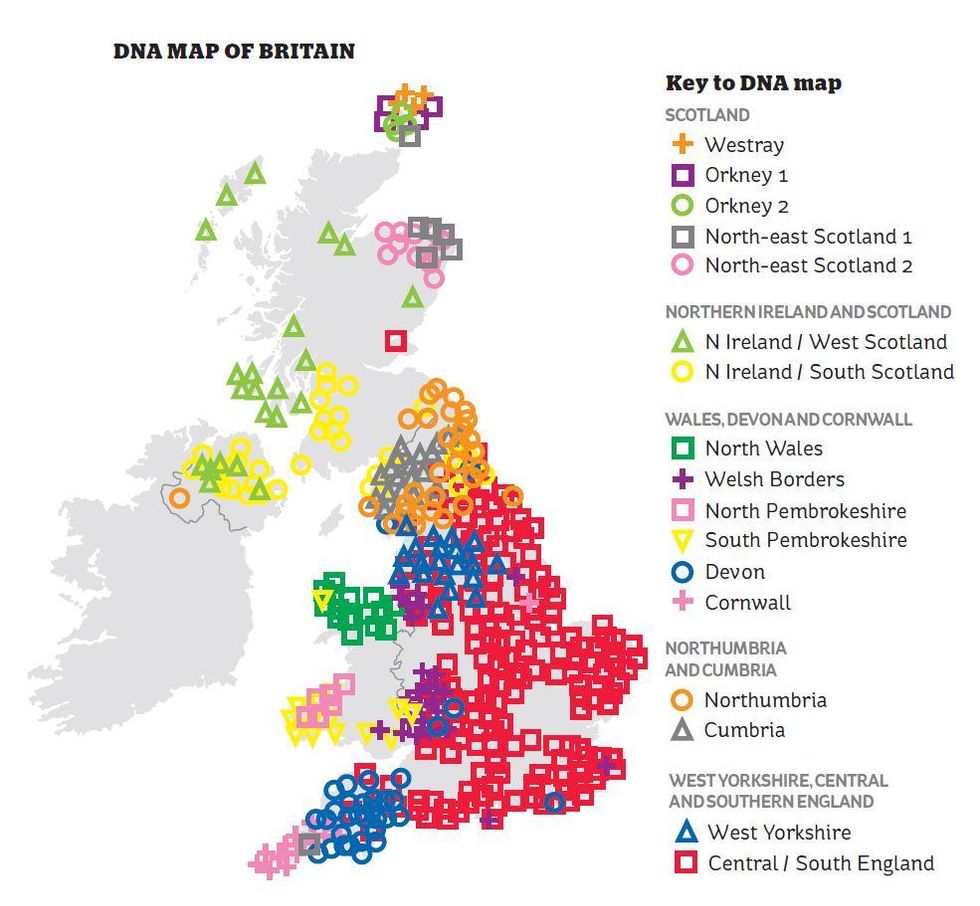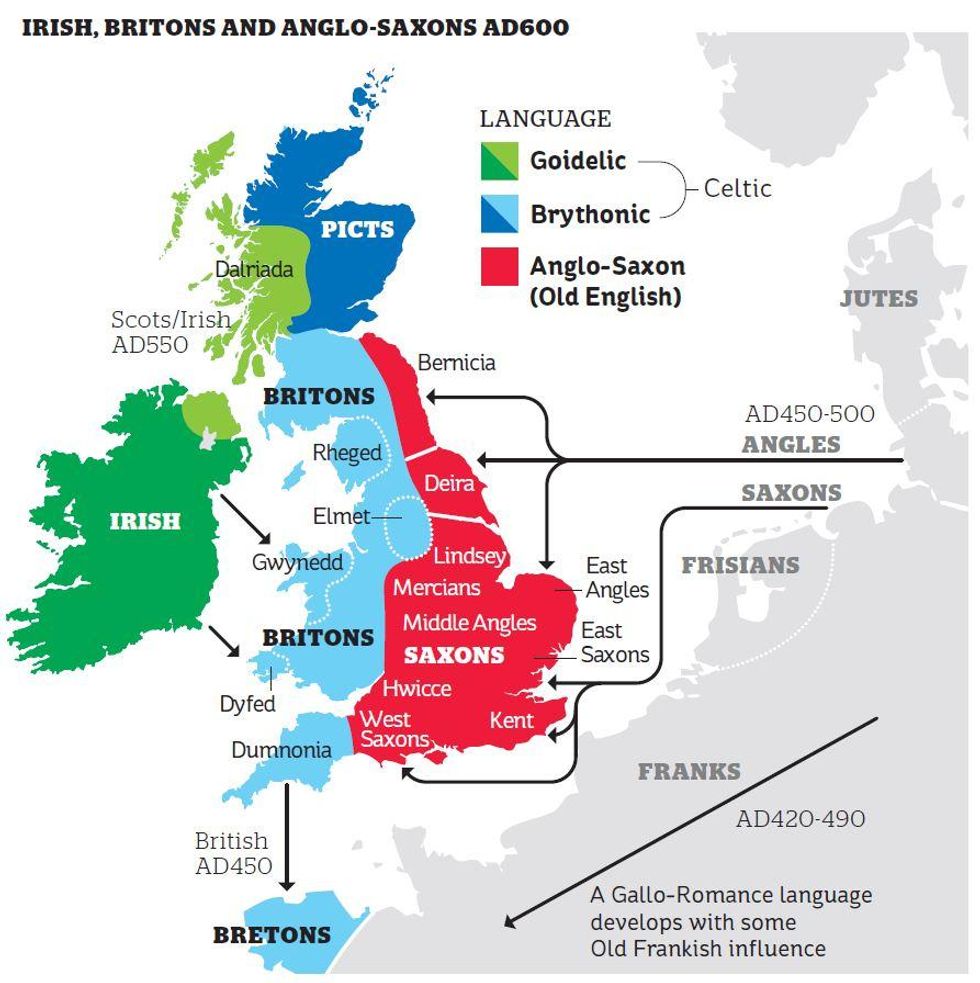News
Steve Connor (@steveaconnor
Mar 19, 2015

These new maps from the “People of the British Isles” study show how the genetic make-up of the nation was formed by waves of immigration from continental Europe over the last 10,000 years.
The maps reveal 17 DNA clusters (above) that reflect key migrations and separations in early history such as the arrival of the Anglo-Saxons and the Norse Viking invasion of the Orkneys in the 9th century (below map).
It was based on DNA samples taken from more than 2,000 people whose four grandparents were all born in the same locality and is the most detailed genetic analysis of the original inhabitants of these isles.
Here's what the study found:
Scotland
A clear genetic connection is seen between the northern Irish and the people of south-west Scotland, indicating ancient migrations from Ireland to Scotland.
North Wales
More similar to the earliest settlers of Britain after the end of the last Ice Age, when Britain was connected to continental Europe by a land bridge.
Wales
The ‘Celtic’ genetic group shows huge variations - the differences between north and south Wales are greater than between northern and southern England.
South Wales
Evidence for the effect of the Landsker line, the linguistic barrier between the English-speaking people of south-west Pembrokeshire and Welsh speakers further east.
Cornwall
The linguistic division of the ancient Cornish and the people of Devon is clearly seen in the genetic differences along the county boundary of the River Tamar.
Orkneys
The most genetically distinct group, they share more with present-day Norwegians, which reflects colonisation by the Viking Norse in the 9th century.
Yorkshire
The people of the West Ridings appear to reflect descent from the ancient Bythronic kingdom of Elmet in AD600.
England
The arrival of the Anglo-Saxons after the end of Roman rule in AD410 is indicated in the genetic connection with modern-day Germany, indicating intermarriage.
The study reveals that the white, indigenous English share about 40 per cent of their DNA with the French, about 26 per cent with the Germans, 11 per cent with the Danes and in the region of 9 per cent with the Belgians.
More: The stereotype map of Britain according to north Londoners
Top 100
The Conversation (0)















